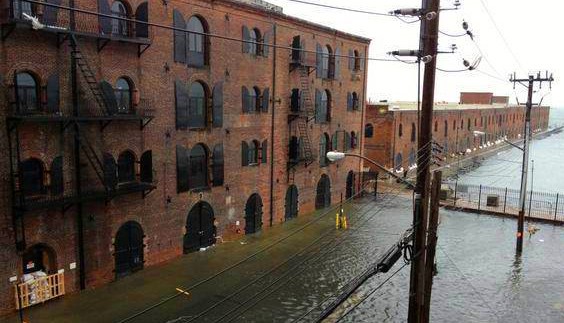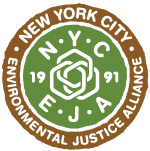
USACE HATS
The US Army Corps of Engineers (USACE) is in the process of creating a coastal resilience plan to combat the risks caused by storms like Superstorm Sandy called the New York-New Jersey Harbor and Tributaries Study (NYNJHATS). The NYNJHATS plan is a coastal storm risk management plan for the New York-NewJersey region. Spanning 2,150+ square miles, 900+ miles of shoreline, and 25 counties, this is one of the largest projects the US Army Corps of Engineers has ever undertaken and is expected to bring approximately $63 billion dollars of investment to the region if fully funded and implemented. Officially this project began in 2016, with the draft plan options being researched and created. This is a decades-long project that has been underway since 2016 and is nearing the end of the planning phase. From a variety of plans, they selected plan 3B to carry forward into the public comment period (2022-23), design phase (2024-2030), and construction (2030+). This project will bring tens of billions of dollars of protection to the NY-NJ region. However, the plan, as written, is insufficient to protect the majority of environmental justice communities in the region and fails to protect us all against the many threats climate change is bringing to our coasts, focusing solely on storm surge, rather than also including sea level rise, extreme rainfall, and other coastal risks. We have been working to encourage USACE to improve the plan and do their duty as mandated by WRDA 2020 and WRDA 2022, and to prioritize our most vulnerable communities. We want to see their final plan include:
- Protection for all of our most vulnerable communities (EJ, low-income, people of color, etc)
- Focus on EJ priorities
- Multi-hazard risk mitigation (storm surge, sea level rise, rain inundation, and other flood risks)
- Fully exploring natural and nature-based solutions for the plan and incorporation of as many as possible/practicable
- Multiple social, environmental, ecological, and economic benefits, and partnerships with other government agencies that can enhance a variety of solutions
See our full public comments here.
Waterfront Justice Project
In 2010, NYC-EJA launched our Waterfront Justice Project, New York City’s first citywide community-based resiliency campaign. When the City of New York initiated its overhaul of the Comprehensive Waterfront Plan (Vision 2020) in 2010, NYC-EJA began our advocacy campaign to convince the Bloomberg Administration to reform waterfront designations called Significant Maritime Industrial Areas, or SMIA’s. SMIA’s are zones designed to encourage the clustering/concentration of heavy industrial and polluting infrastructure uses. There are only seven SMIA’s in the City – six of which are all classic “environmental justice” communities (i.e. – the South Bronx, Sunset Park, Red Hook, Newtown Creek, Brooklyn Navy Yard & North Shore of Staten Island) – predominantly low income-communities of color.
NYC-EJA discovered the six SMIA’s are all in storm surge zones, and that the City of New York had not analyzed the cumulative contamination exposure risks associated with clusters of heavy industrial use in such vulnerable locations. In collaboration with Pratt Institute, NYC-EJA prepared GIS maps showing the SMIA’s with storm surge zone overlays. Following months of public testimony and media education by NYC-EJA and its members and allies, City officials agreed in 2011 to work with stakeholders to reform SMIA’s and address related community resiliency/climate adaptation issues. (To learn more, please read Accomplishments column.)
NYC-EJA worked with our members in SMIA communities on a reform campaign to overhaul NYC’s coastal zone management plan known as the Waterfront Revitalization Program (WRP). The improvements in the WRP only apply to new businesses — existing businesses are exempt. At the invitation of the City Council, NYC-EJA advised Council staffers on proposed amendments to the Community Right-to-Know law (which requires facilities that handle hazardous substances to annually report what chemicals are used/stored, and how their emergency planning protects first responders and the public in the case of fire, spills or accidental chemical release). NYC Local Law 143 (2013) amends the Right-to-Know law to now include coastal storm surge and hurricane evacuation zones as part of the geography established to: a) require that facilities report the presence of hazardous substances; and b) develop a “risk management plan” to prevent the release of hazardous substances during potential flooding and other extreme weather events.
Our research is helping to identify innovative strategies to build climate resilient industrial waterfronts while promoting local industrial jobs. NYC-EJA is currently participating in two groundbreaking Waterfront Justice Project research partnerships.
The Waterfront Justice Project Interactive Map is a collaborative effort between NYC-EJA and the Scientist Action and Advocacy Network (ScAAN), aiming to visualize maps created by NYC-EJA through our Waterfront Justice Project (WJP)
As a member of the Grassroots Research to Action in Sunset Park partnership (GRASP), we are working with UPROSE, the Rand Corporation, and The LifeLine Group on a community-based participatory research project in Sunset Park to support community-based actions seeking to reduce contamination risks associated with storm surge-vulnerable industrial waterfronts while building climate resiliency. The current work is part of a multi-year research project – funded by the National Institute of Environmental Health Sciences (NIEHS) -seeking to understand the public health risks posed by fugitive chemicals from the automotive industry, and increase community capacity to address those risks.
NYC Industrial Waterfront Communities Pollution Prevention, Toxics Reduction, and Resiliency Planning
NYC-EJA worked in partnership with the NYS Department of Environmental Conservation (NYS-DEC) and the Rochester Institute of Technology (RIT) NYS Pollution Prevention Institute on the EPA-funded “NYC Industrial Waterfront Communities Pollution Prevention, Toxics Reduction, and Resiliency Planning” project in the South Bronx Significant Maritime and Industrial Area (SMIA). This 2-year project involved helping auto-related businesses to identify and implement cost-effective strategies aimed at pollution prevention, toxics reduction, and climate adaptation.
For more information on similar initiatives, see NYC-EJA’s Community Resiliency and People’s Climate March.

